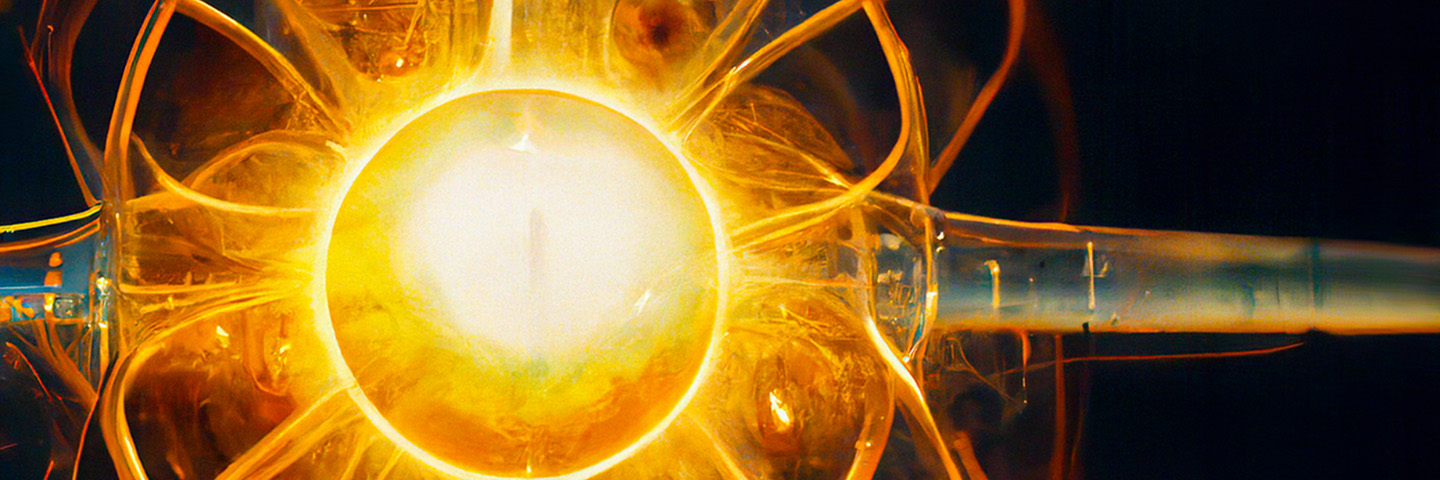Nuclear fusion reactors
Fusion power is a promising form of energy generation. It seeks to replicate the process that powers the sun and stars: nuclear fusion. In a fusion reaction, two light atomic nuclei, typically isotopes of hydrogen called deuterium and tritium, are forced together at extremely high temperatures and pressures. When these nuclei fuse, they form a heavier nucleus, releasing a tremendous amount of energy in the process.
Clean energy
The energy released from this nuclear merge is several times greater than that released from nuclear fission. Nuclear fission is the process currently used in nuclear power plants. Additionally, fusion reactions produce little to no radioactive waste and don’t emit greenhouse gases. This makes fusion a potentially cleaner and safer energy source compared to traditional fossil fuels and even nuclear fission.
Power of the stars
Achieving sustained and controlled reactions
Researchers and engineers have been developing fusion reactors. These devices are designed to replicate these extreme conditions on Earth, but in a controlled environment. One of the most promising approaches is magnetic confinement fusion. Which uses powerful magnetic fields to confine and control the hot plasma where fusion reactions occur. Another approach is inertial confinement fusion. This approach uses intense laser or particle beams to compress and heat a fuel pellet containing fusion fuel.
Despite decades of research and progress, practical fusion power plants are still in the experimental stage. However, numerous international collaborations and private ventures are actively working toward achieving sustained and controlled fusion reactions. Eventually leading to the development of commercial fusion power plants. If successful, fusion power has the potential to provide a virtually limitless and sustainable source of clean energy for humanity’s future energy needs.
Astrol pulsed power switches in fusion applications
An ultra-fast IGBT-based DC breaker is a cutting-edge device designed for short circuit protection in nuclear fusion or fusion power systems. Let’s break down the components and functionality.
Ultra-fast IGBT (Insulated Gate Bipolar Transistor)
We use Semiconductor devices such as IGBTs for power electronics applications. They combine the advantages of MOSFETs (Metal-Oxide-Semiconductor Field-Effect Transistors) with the high-current capability of bipolar transistors. The switching speed (the time it takes for the device to turn on and off) in an ultra-fast IGBTis optimized for rapid operation.
DC Breaker
In fusion power systems, a DC breaker serves as a protective device that interrupts the flow of direct current (DC) in the event of a short circuit or other fault condition. Its primary function is to prevent damage to equipment and ensure the safety of the overall system.
Short Circuit Protection
Short circuits can occur when there is an unintended connection between two points in the electrical circuit. This results in a sudden surge of current. Because of the involvement of high voltages and currents in a fusion power system, short circuit protection is essential to prevent damage to sensitive components and ensure the safe operation of the system.
Functionality
An ultra-fast IGBT-based DC breaker is designed to detect short circuit conditions and quickly interrupt the flow of current to isolate the fault. The ultra-fast switching speed of the IGBT allows the breaker to respond rapidly to short circuit events. Doing so it minimises the duration of the fault and reduces the risk of damage to the system.
Advantages:
- High-Speed Operation: Ultra-fast IGBTs enable the breaker to respond to short circuit events within microseconds. Minimizing the impact on system operation.
- High Current Handling Capacity: IGBTs can handle high currents. Making them suitable for use in fusion power systems where large amounts of electrical power are involved.
- Reliability: IGBT-based breakers are known for their reliability and long-term performance, ensuring the continued safe operation of fusion power systems.
Applications:
Ultra-fast IGBT-based DC breakers find applications in various areas of fusion power systems, including plasma heating and control, magnetic confinement, and power conversion and distribution. They play a crucial role in ensuring the safety and reliability of these complex and high-power systems.

